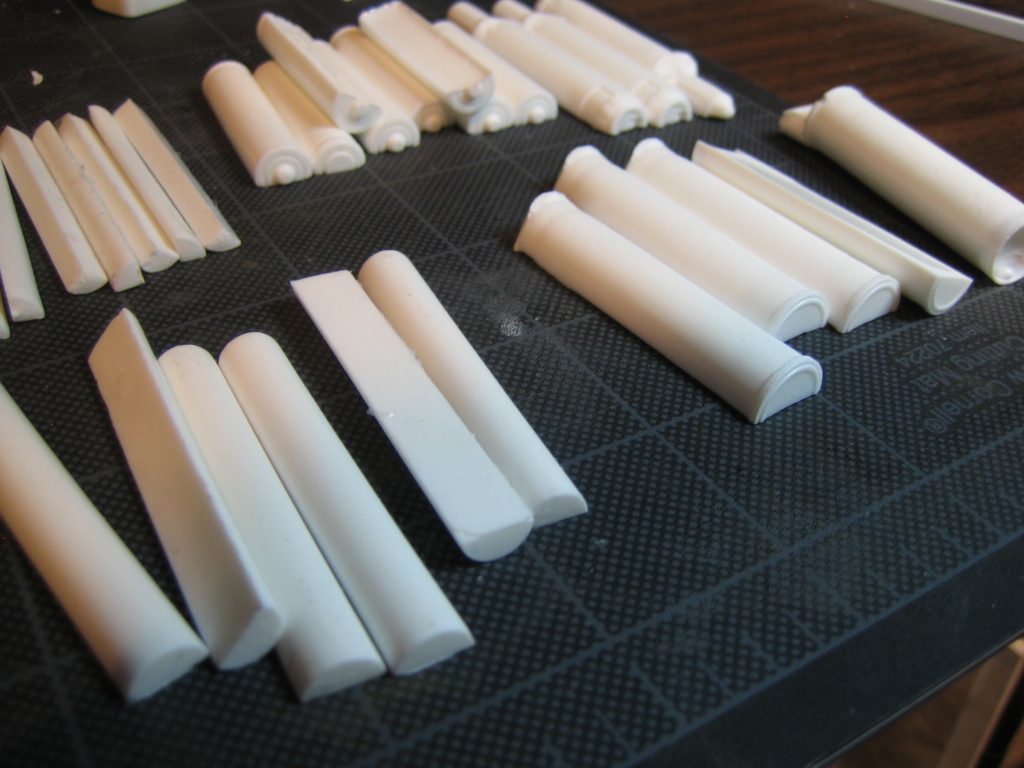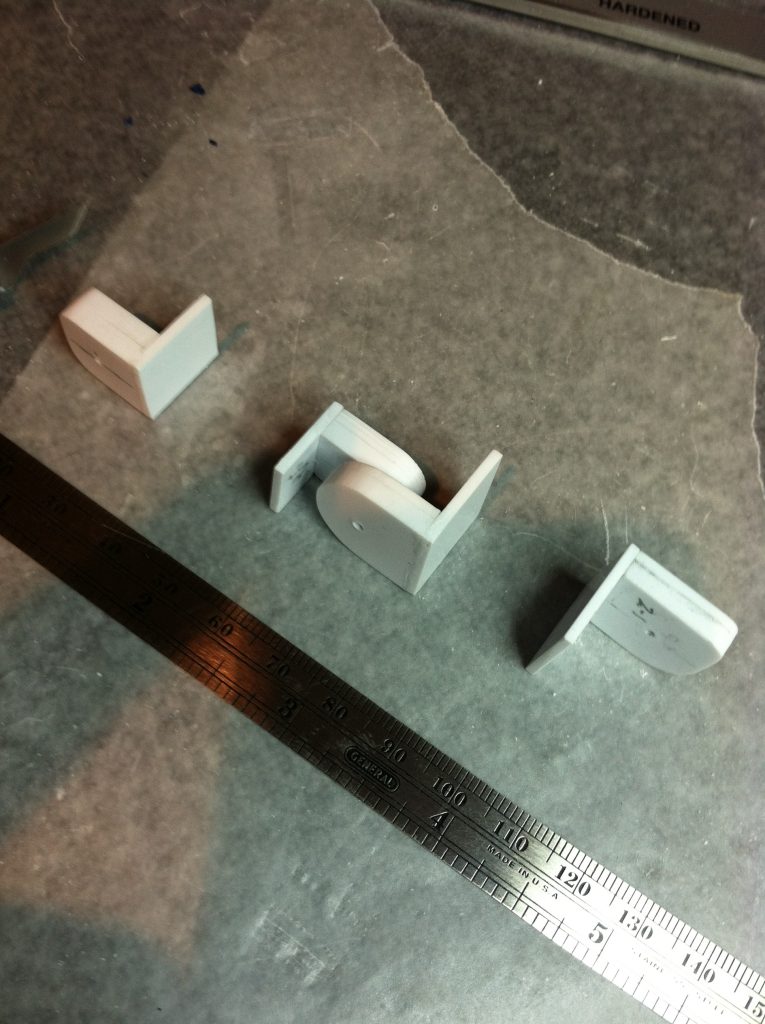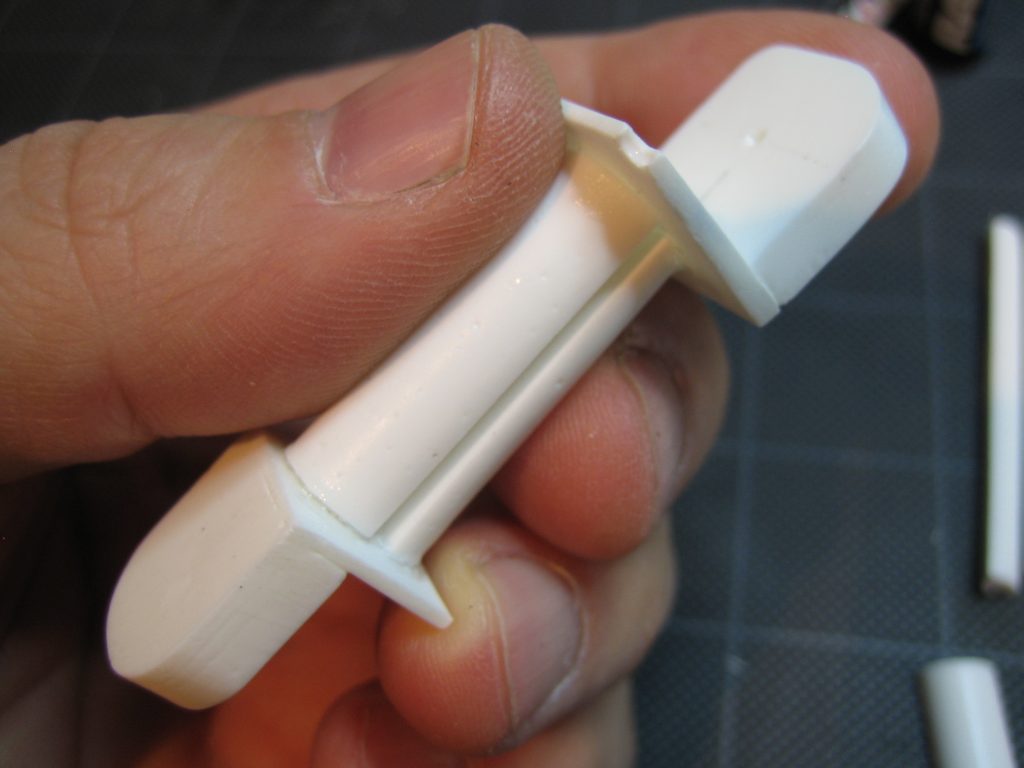With the completion of my research, I decided that I would build the arm based upon the following info:
- The foundation would be the arm used for the closeups in T2
- The drawing I had found based upon that arm would be used for accuracy
- I would only modify measurements if necessary to maintain movements, but visual accuracy would be paramount.
I have previously done a lot of resin casting for some shop tooling and my Iron Man Arc Reactor prop build. I played with doing this for some prototyping, thinking I could work with a resin hard enough to work. I started by casting some tubular shapes, making half rounds and corners for the bones of a finger prototype.

Some AAA batteries, by coincidence, were the exact diameter, so I cast silicone molds of some (and other objects of the correct size). These half-round modes were then filled with resin and other two-part plastics.

Once hardened, it was a quick method of making many duplicated for testing. One downside was that, without a proper vacuum chamber, my castings tended to have some small bubbles, which I had to manually fill with putty along the way. Another problem with casting small items is that you tend to mix small quantities of plastic, and the smaller the quantity, the more difficult it is to get the ratios of chemicals correct. Many castings came out ‘soft’, or too brittle because of this. Even tiny discrepancies in volume of resin vs. hardeners made it very difficult to cast single or small number of parts like this.
I used styrene for the more ‘sheet-like’ components, cutting and carving and gluing to get more complex shapes.


A completed finger length from knuckle to knuckle. So, what did I learn?
- Resin is too finicky to work with in very small quantities.
- Casting in resin requires a vacuum chamber unless you want to spend significant amounts of time patching hole left from bubbles that gradually rise in the resin while it hardens.
- Styrene is easy to work, shape and glue.
- Overall, the plastic/resin just wasn’t strong enough; it could be bent, and was still brittle enough to snap.
- The styrene glue joints, since styrene is ‘welded’ with solvent, are very strong. But epoxy joints between resin and styrene didn’t have enough surface area to be strong enough to trust. CA glue proved handy along the way.
Although it was very cool to see the structure and shape coming together I felt that the resin/glue was a bit flimsy. I had experimented a bit with adding glass fiber to the resin casts but it didn’t help much. I was also concerned that painting the hand in metallic would be even more difficult because of the moving parts rubbing against each other. I began reconsidering the medium and started thinking about metal.
I already own a full compliment of woodworking tools but metalworking would require an entirely different setup. I spent about two months researching and talking online to people and came to the conclusion that I would need (at minimum) a lathe and a mill. I looked into Chinese mini-mills and several others and settled upon a Sherline Mill. Small enough for what I’m working on and expandable to within reason it seemed like a good setup for this and other projects. I’m also planning on designing my own encoder readers and software for measurements before I make it CNC compatible. Therefore the T800 arm would be on hold for a bit as I tool up for metalworking.